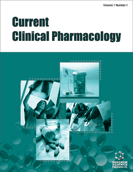Abstract
Background: Cerebral malaria (CM) is a severe complication of Plasmodium falciparum infection which may result in death or developmental disability. The pathologic processes leading to CM are not fully elucidated; however, widely accepted mechanisms include parasite sequestration, release of infected red blood cell contents, activation of endothelial cells, increased inflammatory responses, and ultimately dysfunction of the neurovascular unit (NVU). The endothelium plays a central role in these processes as the site of parasitized erythrocyte sequestration and as the regulator of fluid extravasation into the central nervous system. Modulating endothelial barrier function at the NVU may provide new therapeutic approaches to improve outcomes in CM.
Methods: Here we provide a narrative review of the literature of peer-reviewed research relating to adjunctive therapies for CM. We discuss regulatory pathways of the NVU, with a focus on the potential for pharmacologic modulation of the NVU to improve CM outcomes.
Results: Recently licensed pharmaceuticals, developed as therapies for cancer or neurologic disease, could be re-purposed for use as host-directed therapies in CM to target pathways involved in endothelial stability and activation.
Conclusion: The findings of this review highlight recently licensed pharmaceuticals that may be developed as future adjunctive therapies for CM.
Keywords: Cerebral malaria, infectious disease, childhood morbidity, adjunctive therapies, neuroprotective, cerebral edema, endothelial cells.
Graphical Abstract
Current Clinical Pharmacology
Title:Repurposing Pharmaceuticals as Neuroprotective Agents for Cerebral Malaria
Volume: 12 Issue: 2
Author(s): Hannah M. Brooks and Michael T. Hawkes*
Affiliation:
- Department of Pediatrics, University of Alberta, Edmonton, Alberta,Canada
Keywords: Cerebral malaria, infectious disease, childhood morbidity, adjunctive therapies, neuroprotective, cerebral edema, endothelial cells.
Abstract: Background: Cerebral malaria (CM) is a severe complication of Plasmodium falciparum infection which may result in death or developmental disability. The pathologic processes leading to CM are not fully elucidated; however, widely accepted mechanisms include parasite sequestration, release of infected red blood cell contents, activation of endothelial cells, increased inflammatory responses, and ultimately dysfunction of the neurovascular unit (NVU). The endothelium plays a central role in these processes as the site of parasitized erythrocyte sequestration and as the regulator of fluid extravasation into the central nervous system. Modulating endothelial barrier function at the NVU may provide new therapeutic approaches to improve outcomes in CM.
Methods: Here we provide a narrative review of the literature of peer-reviewed research relating to adjunctive therapies for CM. We discuss regulatory pathways of the NVU, with a focus on the potential for pharmacologic modulation of the NVU to improve CM outcomes.
Results: Recently licensed pharmaceuticals, developed as therapies for cancer or neurologic disease, could be re-purposed for use as host-directed therapies in CM to target pathways involved in endothelial stability and activation.
Conclusion: The findings of this review highlight recently licensed pharmaceuticals that may be developed as future adjunctive therapies for CM.
Export Options
About this article
Cite this article as:
Brooks M. Hannah and Hawkes T. Michael*, Repurposing Pharmaceuticals as Neuroprotective Agents for Cerebral Malaria, Current Clinical Pharmacology 2017; 12 (2) . https://dx.doi.org/10.2174/1574884712666170704144042
| DOI https://dx.doi.org/10.2174/1574884712666170704144042 |
Print ISSN 1574-8847 |
| Publisher Name Bentham Science Publisher |
Online ISSN 2212-3938 |
 25
25 4
4 1
1 1
1Related Articles
-
Targeted Alpha Therapy with 213Bi
Current Radiopharmaceuticals Image-Guided Drug Delivery with Single-Photon Emission Computed Tomography: A Review of Literature
Current Drug Targets The Medicinal Chemistry of Therapeutic Peptides: Recent Developments in Synthesis and Design Optimizations
Current Medicinal Chemistry Anti-Angiogenic Drugs and Biomarkers in Non-Small-Cell Lung Cancer: 'A Hard Days Night'
Current Pharmaceutical Design Noscapine and its Analogs as Chemotherapeutic Agent: Current updates
Current Topics in Medicinal Chemistry CXCR3-binding Chemokines: Novel Multifunctional Therapeutic Targets
Current Drug Targets - Immune, Endocrine & Metabolic Disorders The Role of Cetuximab and Other Epidermal Growth Factor Receptor Monoclonal Antibodies in the Treatment of Advanced Non-Small Cell Lung Cancer
Reviews on Recent Clinical Trials Polyisoprenylation Potentiates the Inhibition of Polyisoprenylated Methylated Protein Methyl Esterase and the Cell Degenerative Effects of Sulfonyl Fluorides
Current Cancer Drug Targets microRNAs as Anti-Cancer Therapy
Current Pharmaceutical Design Synthesis of New Thiazolyl-Pyrazoline Derivatives and Evaluation of Their Antimicrobial, Cytotoxic and Genotoxic Effects
Letters in Drug Design & Discovery Current Application of Quantum Dots (QD) in Cancer Therapy: A Review
Mini-Reviews in Medicinal Chemistry Angiogenic and Vascular Modulation by Extracellular Matrix Cleavage Products
Current Pharmaceutical Design Phosphoinositide-3-kinases as the Novel Therapeutic Targets for the Inflammatory Diseases: Current and Future Perspectives
Current Drug Targets Targeting SKCa Channels in Cancer: Potential New Therapeutic Approaches
Current Medicinal Chemistry Current Status of Epigenetics and Anticancer Drug Discovery
Anti-Cancer Agents in Medicinal Chemistry Drug Target Discovery Through Analysis of Laccase Regulatory Networks of Cryptococccus neoformans
Current Enzyme Inhibition Dendritoma Vaccine for Cancer: A Hopeful Approach
Current Cancer Therapy Reviews Hologram QSAR Studies of N,N-Dialkyl-2-phenylindol-3-ylglyoxylamides Derivatives as Selective Peripheral Benzodiazepine Receptor Ligands
Letters in Drug Design & Discovery Radiation-Induced Neuroinflammation and Radiation Somnolence Syndrome
CNS & Neurological Disorders - Drug Targets Targeted Angiogenesis Therapy in Head and Neck Squamous Cell Carcinomas
Current Angiogenesis (Discontinued)






















